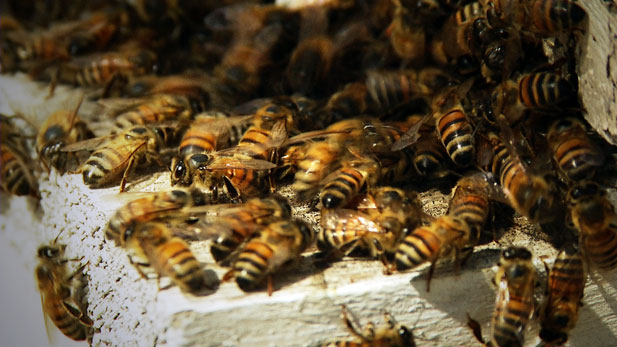Spring in the Old Pueblo means waves of flowers, followed by waves of pollinators. Pollinators as in bees.
Linda McKittrick knows bees. She keeps several colonies in her back yard and says they are becoming active after overwintering.
“They begin to shut down their brood cycle for the winter. They want to preserve their resources,” McKittrick says. “One bee colony is its own super-creature. They don’t think in terms of individual bees; they think of themselves as a whole. So they kick out the drones since they don’t contribute much, and they tend to be a drag on the resources.”
McKittrick says that the big mesquite and palo verde honey flows have not started yet, but the activity she sees in her hives suggests that swarming has begun, and she believes the season might come early this year. “And it will as the palo verde and the mesquite and the different flows begin,” she says.
In her small back yard apiary, she keeps the traditional Langstroth frame hives, where the bees enter through a small opening and build their hives on pre-made structures.
She has also incorporated a less common beehive structure known as the Kenya Top Bar hive, which more closely mimics the bees natural home. “Here they are able to build more like they would in a tree trunk,” McKittrick says.
She points out that she tries to put the needs of the bees before hers, and this design allows the bees to remain relatively undisturbed when she works with them, allowing for easier access to the honey and wax during the harvest.
McKittrick says bees play an important role in the urban environment. She also says that because of the diversity of their habitat they have largely been unaffected by the recent colony collapse disorder that has devastated the commercial beekeeping industry across the nation.


By submitting your comments, you hereby give AZPM the right to post your comments and potentially use them in any other form of media operated by this institution.